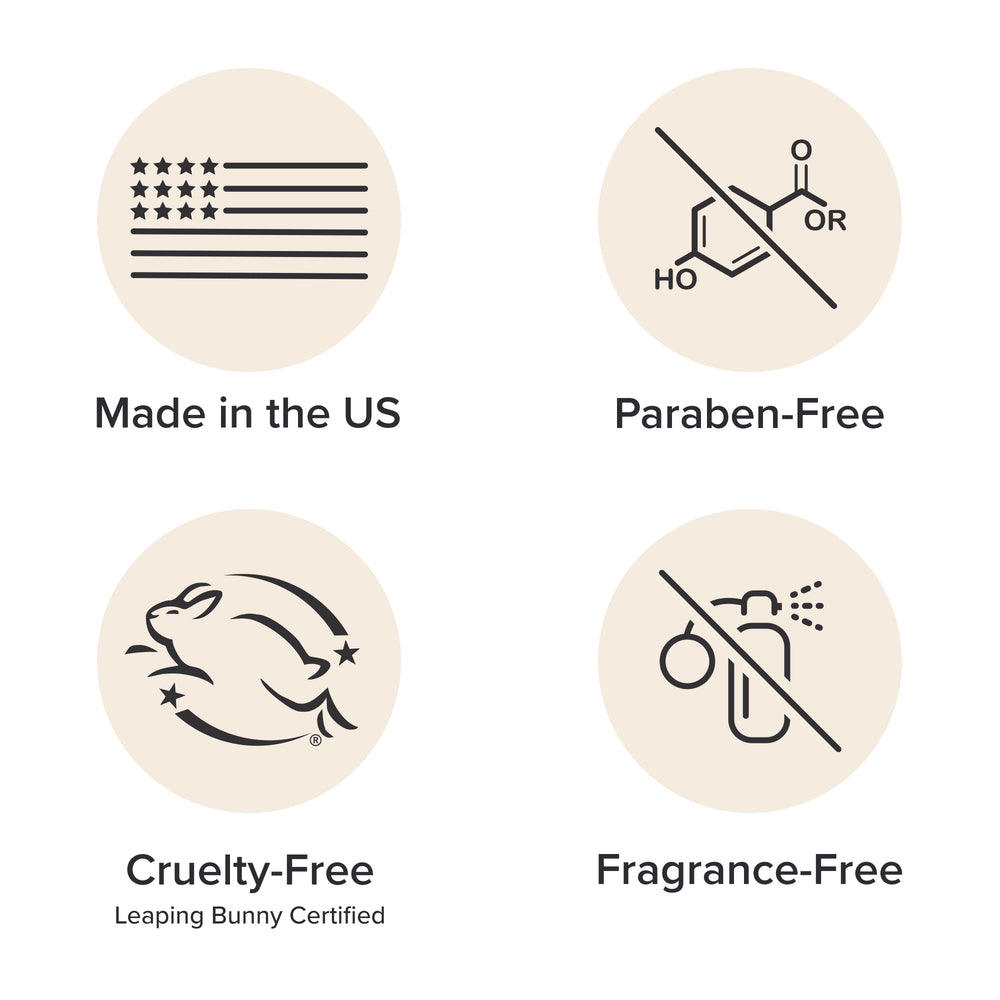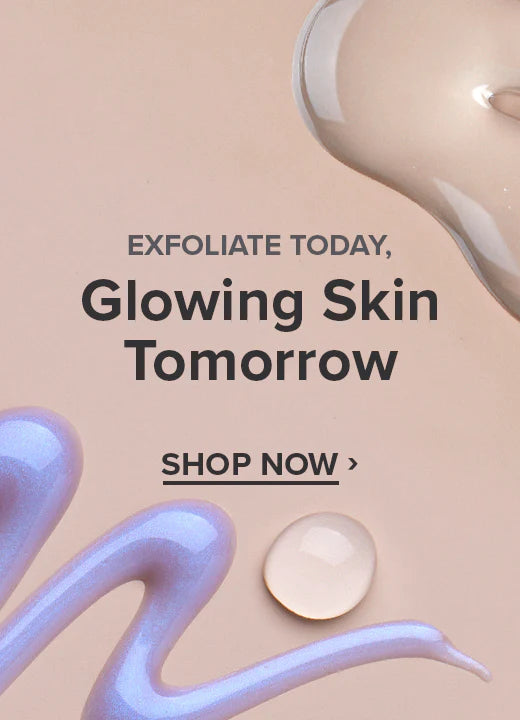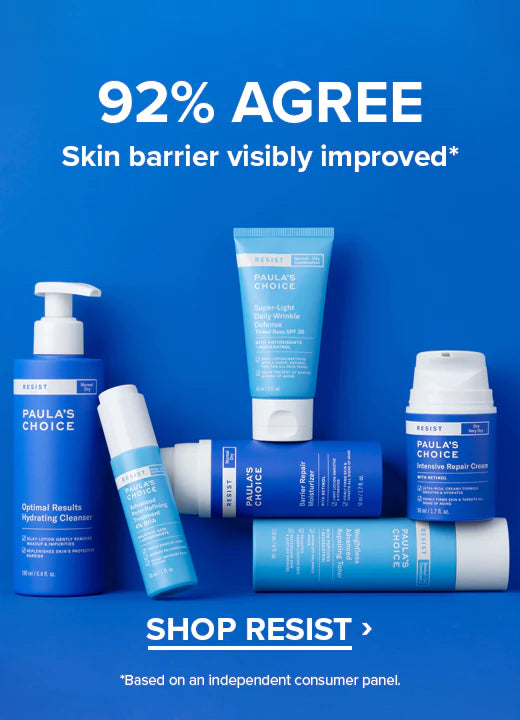Written by: Shannon Steck
Medically Reviewed by: Beth McLellan MD Board-Certified Dermatologist
If you haven’t heard about the use of peptides in skin care products, we’re here to fill you in on the benefits and limitations of these intriguing ingredients. They’ve come a long way, with new research on how peptides benefit skin pushing what we know this incredible group of ingredients can do (1).
Some of the information out there is overblown, but other aspects of peptides for skin deserve your attention. Let’s separate facts from fiction.
What are peptides?
First, we need to start with the science: Peptides are fragments of proteins. On their own, peptides are made up of amino acids. When amino acids are combined in certain formations, they create specific peptides (and there are hundreds of peptides), and when peptides are formed in a certain way, they make specific proteins.
Proteins, like collagen and elastin, are the fundamental building blocks of skin. Without peptides and proteins, skin doesn’t remain intact. The result is loss of firmness, the appearance of wrinkles, textural changes and skin that doesn’t bounce back as it once did.
What’s so fascinating about peptides is that abundant research has clearly shown that each of them works in very specific ways to target an exact skin care need. They also teach skin to do what's required to help revitalize these building blocks, helping to revive aging skin.
What are the benefits of peptides in skin care?
Promising new research about using peptides in skin care products has us excited because it expands on the already impressive anti-aging, barrier-supporting and hydrating feats of this diverse group of ingredients (2). Now, there are even more intriguing reasons to consider peptides as a significant part of a skin care formula (3). “Having more options for skin care is great as some people will find their skin responds better to certain ingredients, while others benefit from combining several products,” says board-certified dermatologist Dr. Beth McLellan.
Although there are hundreds of peptides, they all have this in common: they demonstrate skin-restoring abilities when formulated with care and attention. Skin-restoring ingredients work best to help skin appear younger by nourishing and helping to revitalize both its moisture and antimicrobial barrier, also known as skin’s microbiome.
Remember, peptides' ability to help revitalize skin's building blocks so it becomes more resilient is a wonderful asset for skin, but keep your expectations realistic, or you’ll be disappointed (4).
Further, peptides' facial benefits vary greatly based on each specific peptide.

What are peptides in skin care products?
Because of the sheer number of peptides and their often-long names, it can be more challenging to identify them on an ingredient list. Don’t fret, we’re sharing with you an easy way to know if the ingredient you’re assessing is a peptide or not.
A telltale sign you’re looking at a peptide is if the ingredient name ends in ‘peptide’ or begins with ‘palmitoyl.’ It’s also common to see numbers following a peptide’s name. These rules don’t apply to every single peptide name, but they sure are handy.
To get familiar with some of the most common peptides and their names, we’ve put together a list below:
- Tridecapeptide-1, a folded peptide that helps reduce the appearance of fine lines and wrinkles.
- Palmitoyl Dipeptide-10, a synthetic peptide with skin conditioning and anti-aging benefits.
- Sh-polypeptide-121, a vegan, collagen identical peptide that exhibits soothing properties.
- Palmitoyl Tripeptide-38, AKA MATRIXYL synthe’6, assists in the maintenance of skin’s structure.
- Tetrapeptide-72, supports skin’s architecture.
- Palmitoyl Hexapeptide-12, synthetic peptide that helps boost the barrier and skin’s firmness.
- Tripeptide-5, helps skin appear plumper and more youthful.
Although their names may sound or look intimidating, once you know what to look for, peptides are easy to identify on any ingredient list. An exception? Some ingredients don’t “read” as peptides on a skin care product ingredient list but chemically speaking, they’re peptides. Common examples include glutathione, carnosine and silk protein.
How to choose peptide skin care products
Finding a product that combines the power of peptides with protective packaging and a mix of great supporting ingredients might prove tricky, but we’re about to help you solve this skin mystery.
First off, peptides are best when formulated in leave-on products like serums. The length of exposure to skin that leave-on products allow make them the best way for peptides to deliver their unique range of benefits. Look for peptides in moisturizers, serums, boosters, eye creams, sunscreens and other skin concern treatments. When peptides are included in rinse-off products, like cleansers, this diverse group of ingredients isn’t given the opportunity to hydrate, replenish or nourish. As quickly as they’re applied, they’re rinsed off.
But this isn’t all! Packaging and formulation are just as important as product type when scouring the digital and physical shelves for a peptide product. Peptides are powerhouses, but much like retinol and vitamin C, they work best when formulated with supporting ingredients, like ceramides and hyaluronic acid. All of this means nothing if the formula is not housed in an airtight, opaque container. Light and air degrade the quality of most peptides, so skip anything kept in clear jars.
We’ve kept all of the above in mind when formulating our hero peptide products, Hyaluronic Acid + Peptide Lip Booster and the targeted Pro-Collagen Multi-Peptide Booster.
In our Hyaluronic Acid + Peptide Lip Booster, specialized peptides work with key plant extracts to target loss of firmness and volume on lips. Hyaluronic acid helps smooth lines as this peptide lip treatment interrupts factors which cause them to become thinner over time. It’s a great example of peptides delivering highly targeted results alongside tried-and-true hydrators in portable packaging.
Our anti-aging peptide staple, the Pro-Collagen Multi-Peptide Booster offers skin a highly targeted blend of six signaling pro-collagen peptides that work alongside humectants to rebuild, strengthen and firm, leaving skin youthful and nourished.
We also took this approach with our C5 Super Boost Eye Cream, pairing sh-polypeptide-121 and hexapeptide-8 with vitamin C for ultimate strengthening, firming, and brightening of the undereye area.
What can peptides be mixed with?
Peptides can be mixed with any other skin-beneficial ingredients, because as special as peptides are, they need "friends" in the form of supporting ingredients to help address all the needs of skin, as touched on previously.
Any skin care product worthy of your hard-earned dollars must include specialized ingredients such as antioxidants, skin-replenishing ingredients and skin-restoring ingredients (which include peptides). As a reminder (because it’s so important), when peptides are blended with antioxidants, skin-soothing ingredients and skin-replenishing ingredients they can address multiple signs of aging and with consistent use, you’ll love the results! “Using ingredients that work in different ways can maximize the results you see from your skin care regimen,” says Dr. McLellan.
Are peptides safe in skin care?
Peptides have an established track record of being safe for skin, including for all skin types and tones. According to the most recent safety reports from the Cosmetic Ingredient Review Expert Panel released in 2017, 2018 and 2022, peptides are safe for use in cosmetics in current preparations and percentages. Concentrations and percentages of peptides in skin care products vary from peptide to peptide.
Their overall safety is largely due to their gentle, hydrating nature and high compatibility with skin. Many peptides also offer soothing benefits, like sh-polypeptide-121.
Beyond topical applications, peptides can also be delivered to the body through supplements and injectables. When conveyed through these vehicles, peptides are said to help boost health (5). However, seeing as these peptides aren’t applied to skin, they’re not as effective for addressing skin concerns.
For safety information about the supplement and injectable forms of peptides and to see if they’re right for your needs, reach out to your doctor.
What are collagen peptides?
Recently collagen peptides have gotten a lot of attention– both in supplements and in topical skin care products. Yet there’s a bit of misunderstanding when it comes to the benefits of collagen peptides (also referred to as hydrolyzed collagen).
Unfortunately, for topical use, this specific form of peptide cannot help prompt collagen regeneration or repair within skin. Its molecule size is just too large to penetrate skin. However, this doesn’t mean that it’s not beneficial to skin. This buzzy ingredient functions as a humectant, meaning it helps attract and bind water to skin, increasing hydration. In turn, this promotes a dewy, smooth appearance (6).
Research shows these peptides (which can be extracted either from plant or animal collagen) have benefits when used in both topical and supplement applications. Taking collagen peptides orally can result in smoother, more hydrated skin (7).
As we note below, these benefits don’t mean it’s the “best” peptide, it’s simply one more to add to your skin care arsenal.
Copper peptides: fact or fiction?
Speaking of a single skin care ingredient being overly hyped, copper peptides are certainly one of them. The spin begins with the notion that skin’s building blocks are assembled by copper (8). So, the logic would follow that you must have copper peptides in your skin care products to get that reparative benefit. Although it’s true copper peptides are a skin-restoring ingredient, there are lots of other peptides, like those we mentioned above, with equally, if not more impressive, properties.
To keep it in perspective, although there are studies showing the dramatic positive effects of copper peptides those studies rarely, if ever, compare copper peptides to other peptides or other ingredients like potent antioxidants. It’s important to realize that many ingredients have extraordinary research proving their value for skin, not just copper peptides. That’s the pitfall of getting too wrapped up in one single ingredient. Skin care isn’t that simple!
Ironically there’s also research about copper being potentially toxic to skin. However, this research is mostly about pure copper in the body, not as a peptide applied to skin. The negative effects are about what happens when copper is out of balance, meaning too much copper is present such as from excess dietary or supplement intake (9).
What are the drawbacks and limitations of peptides?
Although peptides can address so many skin concerns, we also want you to know there's a lot of hype around what they can do. Sadly, the hype is often completely blown out of proportion. Peptides can do amazing things for skin, but they do not replace what cosmetic corrective procedures can do, as many companies have claimed over the years.
Also noteworthy: There's no single ingredient solution for all the signs of aging and other skin problems we endure, and peptides are no exception. As with all anti-aging ingredients, the best approach is to use products such as moisturizers and serums that use a cocktail of great ingredients, including antioxidants and skin-restoring substances (plus daily broad-spectrum sunscreen) to visibly improve the health and appearance of your skin (10)!
Learn more about skin care ingredients.
References for this information:
- Journal of Drugs in Dermatology, April 2016, supplemental, pages 63-71
- Bulletin of Experimental Biology and Medicine, May 2016, issue 1, pages 175-178
- Cosmetics, May 2017, pages 1-14
- ChemMedChem, August 2016, issue 16, pages 1850-1855
- Drug Discovery Today, April 2013, pages 337-349
- Materials, September 2020, ePublication
- The Journal of Clinical and Aesthetic Dermatology, January 2020, pages 44-49
- Biological Trace Element Research, August 2013, issue 2, pages 268-274
- Nutrients, December 2015, pages 10,053–10,064
- Dermato Endocrinology, July 2012, issue 3, pages 308–319
- Austin Journal of Pharmacology and Therapeutics, August 2014, pages 1-9
- Clinical Chemistry and Laboratory Medicine, April 2013, pages 1–8








